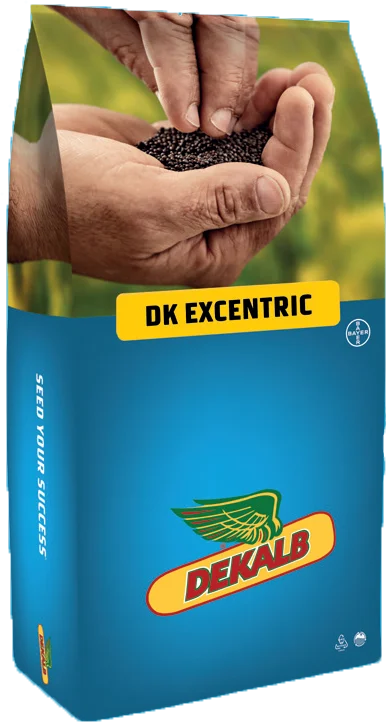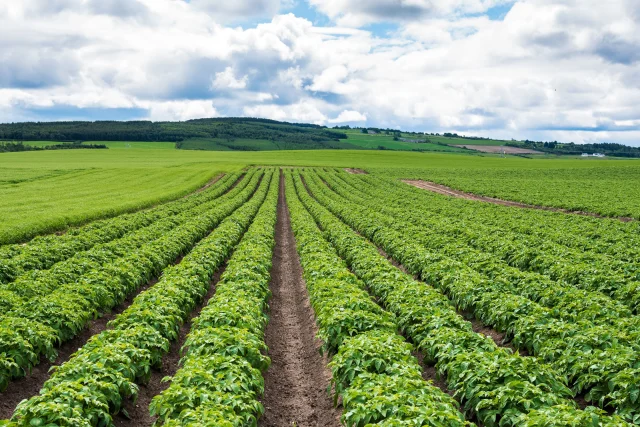Published on 2nd June 2025
Local Insights
Help with ear wash sprays in wheat, plus other agronomy advice for the summer

Current situation (12 May 2025)
Soil type, as you would expect, is playing a role in how well crops are coping with dry weather we’ve had through to now in mid-May. Those on heavier land or over chalk where autumn-sown crops got some roots down are hanging on.
But anything where there is higher sand content, Cotswold brash or similar in the soil, crops are struggling. Winter barley, in particular, is looking very sorry for itself and has lost a lot of tillers. It’s probably not going to recover even if we get rain now.
There’s a chance for the wheats, if we get rain before the end of May, although the wet autumn and late drilling means crops didn’t put down terribly great roots, which is a problem.
Disease in wheat is mostly confined to yellow rust, with the beginnings of brown rust following warm weather in the second week of May. But it is mostly in untreated crops or where growers have made mistakes with fungicide programmes.
Flowering in oilseed rape, which at one point looked like it would be protracted because of big differences in growth stages across fields, ended quite quickly on later plants. Generally crops have podded up quite well, but there is the potential for small seeds with this weather pattern.
1) What to do with wheat ear sprays?
If the dry weather continues for much longer there could be a very short window between flag leaf and ear sprays as stress could cause wheat crops to be in ear and even flowering by early June.
As this is written though, there’s still a lot of unknowns that will help determine what to do at T3. Has it rained? What’s the gap between T2 and T3? What did you spray at T2?
If you continued with what is generally considered a strong Septoria-based T2, maybe with additional rust cover built in, then T3 becomes more of a rust spray. You can do that relatively cheaply with a tebuconazole plus Amistar® or a Firefly®, if you haven’t used your two strobilurin fungicide applications.
If you have used your strobilurin allocation, it could be a Proline® or prothioconazole plus tebuconazole type product, or if you didn’t spray two applications of SDHIs – for example, if you used Univoq® at one of the timings – then a SDHI-containing product, such as Aviator® Xpro® or Ascra® Xpro®, could be an option.
The more difficult decision is if you’ve gone cheap at T2 and it starts raining as you have to assume you’ve not got much protection on the flag from Septoria, albeit it is long way for it to splash from the base of plants where it is now to the flag leaf in one go, even on short crops. So you’re not going to immediately go to a situation where the flag leaf and leaf two will be infected – it might take two or three rain splash events to infect those leaves.
But if there is a decent amount of rain after a weak T2, you’re probably going to think that the gamble of going cheap has not paid off quite as much as you hoped, but at least crops have some potential after the rain.
At that point you have lots of options – it could be almost anything that you could use at T2 providing you haven’t blown your product allocation requirements. The other thing to watch for is latest timings of application – some have earlier cut offs than others.
As for timing for milling crops you should target when first anthers start appearing as that is the risk period. If it is bone dry, then potentially you could delay as Fusarium risk will be low but be careful with Crusoe which is also at risk from brown rust. In dry weather brown rust will be higher risk, so timing might be more around when control needs topping up from a T2 spray. If it’s rained, Fusarium is the concern.
On non-milling crops, either time around the latest cut-offs or when your T2 will run out of steam. For a Septoria-based T2 you have probably 2.5 to three weeks of protection, but it might be less for brown rust depending on what you used. Don’t think Univoq® and Miravis® Plus are suddenly going to be marvellous brown rust products.
2) What’s the outlook for growing oilseed rape next season?
I wouldn’t say it’s been an easy year for oilseed rape, but there has been a complete change around what pest has caused most damage this season with the order being pigeons, slugs and then cabbage stem flea beetles. Winter rape stem weevil has also been quite a problem in some places as well.
The problem with flea beetle is you just can’t tell – we’ve had a low one this year, but it is still a lottery. The story about good establishment hasn’t changed.
Using tools such as MagicTrap can help with measurement of flea beetle pressure to help understand when to drill, especially if you are planning to delay drilling until after peak migration.
For later drilled crops, rapid autumn growth is a must. Most of our DK varieties have that trait, although DK Extremus is one that stands out as being particularly rapid. It has decent disease resistance, exceptional standing power and showed tolerance to Verticillium wilt in ADAS trials. But perhaps a key strength is that it is up and away quickly in the spring.
If you want flexibility over when you drill to match conditions, DK Excentric is one to consider, along with DK Exstar. DK Excentric has good autumn vigour, but won’t be too far forward if drilled in late July. It has a more prostrate growth habit but is a bit later to restart growth in the spring. In independent yield trials it has performed on a par with Limagrain varieties, such as Ambassador and Aurelia.
In-built pod shatter resistance comes as standard with all DK varieties, which if we get heavy thunderstorms when crops are mature makes a big difference, while the crop establishment guarantee is available across the range too.
3) Learn from weed control experience and trials
The summer field days and trials, plus what you’re seeing in your own crops, are always a good opportunity to review and learn what’s worked well and what hasn’t in terms of grass weed control.
It’s been a year where grass weed control has been quite good with differences between programmes and treatments not as great as seen in previous years. There’s no doubt cinmethylin has worked well and has been safe to wheat crops. I think that’s due to how it was used – soils were moist when it was applied and we’ve learned that, assuming we can travel, using it after emergence will still allow for decent levels of control.
The other thing I’ve learned this year is that splitting residual herbicides into two applications is possibly better than using one larger stack because it prolongs the level of control if there are subsequent weed flushes in the autumn.
But there’s nothing much you can do about flushes of weeds in the spring with residual herbicides – that’s been a problem for some where crops were rolled in the spring.
Mixing modes of action has also proven its worth especially for Italian ryegrass, while in the very worst situations experience is showing that it’s not wise to move away from programmes that contain cinmethylin, flufenacet, aclonifen and pendimethalin. We also have trials work showing that metribuzin is helpful on some weeds that are increasing, such as bur chervil and groundsel.
4) Visit the Bayer Field Day at Hinton Waldrist
If you would like to discuss weed control or have a good look at fungicide performance or the latest wheat varieties, we’re once again opening the gate for our Bayer Field Day at Hinton Waldrist, near Oxford.
Arrive for 6pm on Monday 30 June for the one tour around the site. Food and refreshments will be available as usual.
-----
Amistar® contains azoxystrobin. Ascra® Xpro® contains bixafen, fluopyram and prothioconazole. Aviator® Xpro® contains bixafen and prothioconazole. Firefly® contains fluoxastrobin and prothioconazole. Miravis® Plus contains pydiflumetofen. Univoq® contains fenpicoxamid and prothioconazole. Ascra®, Aviator®, Firefly® and Xpro® are registered Trademarks of Bayer. All other brand names used are Trademarks of other manufacturers in which proprietary rights may exist. Use plant protection products safely. Always read the label and product information before use. Pay attention to the risk indications and follow the safety precautions on the label. For further information, including contact details, visit www.cropscience.bayer.co.uk or call 0808 1969522. © Bayer CropScience Limited 2025







